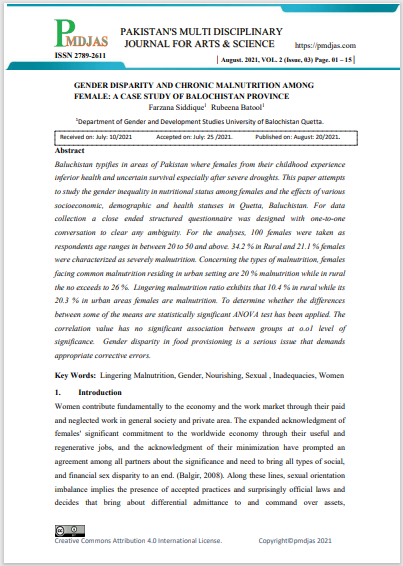Gender Disparity and Chronic Malnutrition Among Female: A Case Study of Balochistan Province
Keywords:
Lingering Malnutrition, Gender, Nourishing, Sexual, Inadequacies, WomenAbstract
Baluchistan typifies in areas of Pakistan where females from their childhood experience inferior health and uncertain survival especially after severe droughts. This paper attempts to study the gender inequality in nutritional status among females and the effects of various socioeconomic, demographic and health statuses in Quetta, Baluchistan. For data collection a close ended structured questionnaire was designed with one-to-one conversation to clear any ambiguity. For the analyses, 100 females were taken as respondents age ranges in between 20 to 50 and above. 34.2 % in Rural and 21.1 % females were characterized as severely malnutrition. Concerning the types of malnutrition, females facing common malnutrition residing in urban setting are 20 % malnutrition while in rural the no exceeds to 26 %. Lingering malnutrition ratio exhibits that 10.4 % in rural while its 20.3 % in urban areas females are malnutrition. To determine whether the differences between some of the means are statistically significant ANOVA test has been applied. The correlation value has no significant association between groups at o.o1 level of significance. Gender disparity in food provisioning is a serious issue that demands appropriate corrective errors.
Downloads






